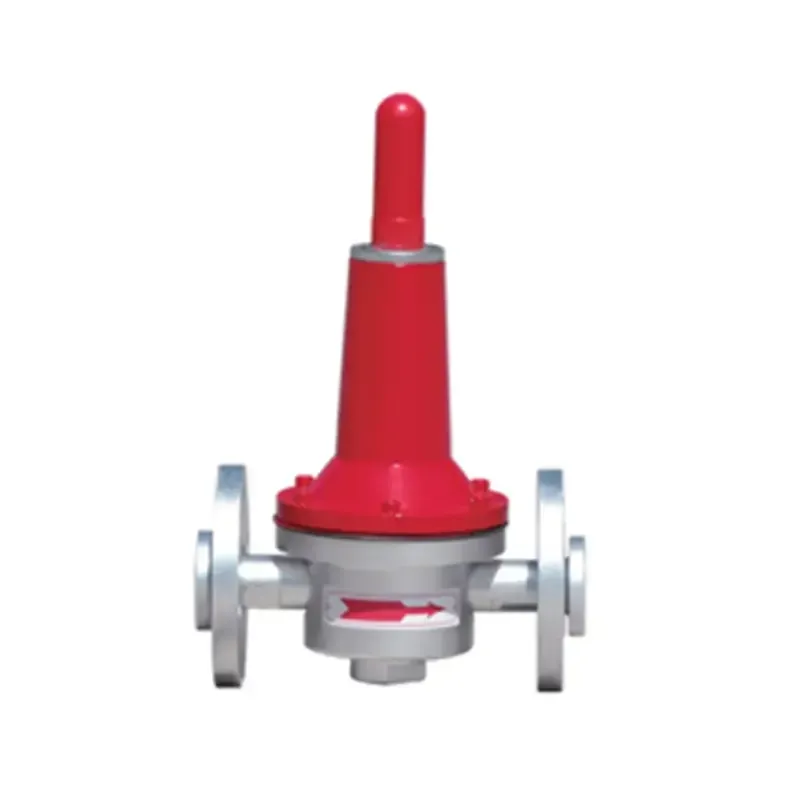
12 月 . 04, 2024 09:25
Back to list
pressure reducing valve
Understanding Pressure Reducing Valves Functionality, Applications, and Benefits
Pressure reducing valves (PRVs) play a crucial role in various industrial and domestic applications by controlling and regulating the pressure of fluids. Their primary function is to maintain a steady and safe downstream pressure, regardless of fluctuations in upstream pressure. This article delves into the functionality, applications, and benefits of pressure reducing valves.
What is a Pressure Reducing Valve?
A pressure reducing valve is a type of valve that automatically cuts off the flow of a fluid at a certain pressure. It reduces higher inlet pressure to a lower outlet pressure, ensuring that the downstream system operates efficiently and safely. PRVs are crucial in preventing damage to piping, equipment, and appliances due to excessive pressure.
How Does a Pressure Reducing Valve Work?
The operation of a pressure reducing valve is based on the principles of pressure and flow dynamics. When fluid enters the valve, it encounters a diaphragm that reacts to the pressure differential. As the upstream pressure increases, it pushes against the diaphragm, which adjusts an internal orifice, reducing the flow to the downstream side.
A key feature of PRVs is their ability to maintain a consistent output pressure. This is achieved through a spring mechanism that allows the diaphragm to move freely. If the downstream pressure decreases (due to increased demand), the valve opens more to allow more fluid through. Conversely, if the downstream pressure rises, the valve restricts the flow. This self-regulating characteristic ensures that downstream systems receive a stable pressure, which is essential for proper operation.
Applications of Pressure Reducing Valves
Pressure reducing valves find applications across various sectors
1. Water Distribution Systems In municipal water supply systems, PRVs are installed to control the pressure of water entering residential areas. This prevents excessive pressure that could damage plumbing fixtures and pipes.
2. Industrial Processes Many industrial applications, such as chemical processing and manufacturing, require specific fluid pressures for optimal performance. PRVs help in achieving these desired pressures, ensuring safe and efficient operations.
3. HVAC Systems In heating, ventilation, and air conditioning (HVAC) systems, PRVs regulate the water and refrigerant pressures, contributing to the efficient functioning of the system.
pressure reducing valve

4. Oil and Gas Industry Oil and gas pipelines utilize PRVs to manage the pressure during transportation, minimizing the risk of leaks and ruptures.
5. Food and Beverage Industry In food processing, maintaining the right pressure is crucial for product quality and safety. PRVs help control pressures in various processes, ensuring compliance with industry standards.
Benefits of Using Pressure Reducing Valves
The benefits of installing pressure reducing valves are numerous. Here are some of the key advantages
1. Protection of Equipment By regulating pressure, PRVs prevent potential damage to downstream equipment, leading to lower maintenance costs and extended service life.
2. Energy Efficiency Reducing pressure in a system often leads to energy savings. By minimizing the pressure drop across the system, PRVs can help lower energy consumption.
3. Improved Safety Excessive pressure can lead to catastrophic failures. PRVs enhance system safety by ensuring that the pressure remains within designed limits, thus reducing the risk of accidents.
4. Cost-Effectiveness Although there is an initial investment in purchasing and installing PRVs, the potential savings on maintenance, repair costs, and energy bills make them a cost-effective solution in the long run.
5. Enhanced System Performance With stable pressure regulation, downstream systems perform optimally, contributing to improved overall efficiency.
Conclusion
Pressure reducing valves are essential components in various applications, ensuring safety, efficiency, and performance in fluid systems. With their ability to maintain consistent pressures, PRVs protect equipment, enhance energy efficiency, and provide significant cost savings. As industries continue to evolve, the importance of PRVs in managing fluid pressures will only increase, making them indispensable in modern engineering and design. Understanding and utilizing PRVs effectively will lead to safer and more efficient systems across multiple sectors.
Next:
Latest news
-
Unlocking The Quality Gas Pressure ReducersNewsNov.01,2024
-
The Role of Gas Pressure Reducing StationsNewsNov.01,2024
-
The Importance and Functionality of Safety Relief ValvesNewsNov.01,2024
-
The Essential Role of Safety Valves in Natural Gas ApplicationsNewsNov.01,2024
-
The Essential Role of Gas Pressure RegulatorsNewsNov.01,2024
-
Enhance Your Premium Gas FiltersNewsNov.01,2024

